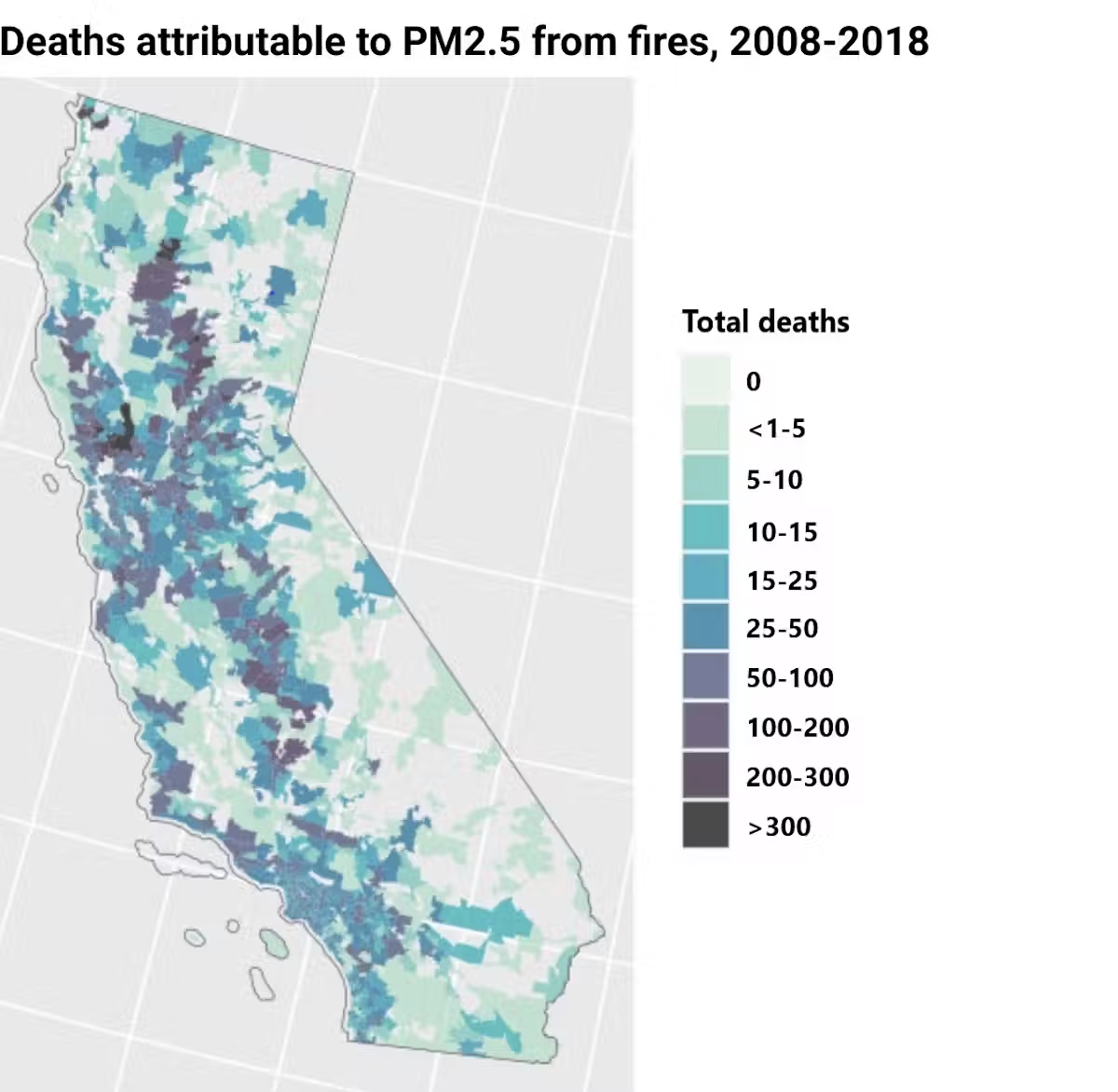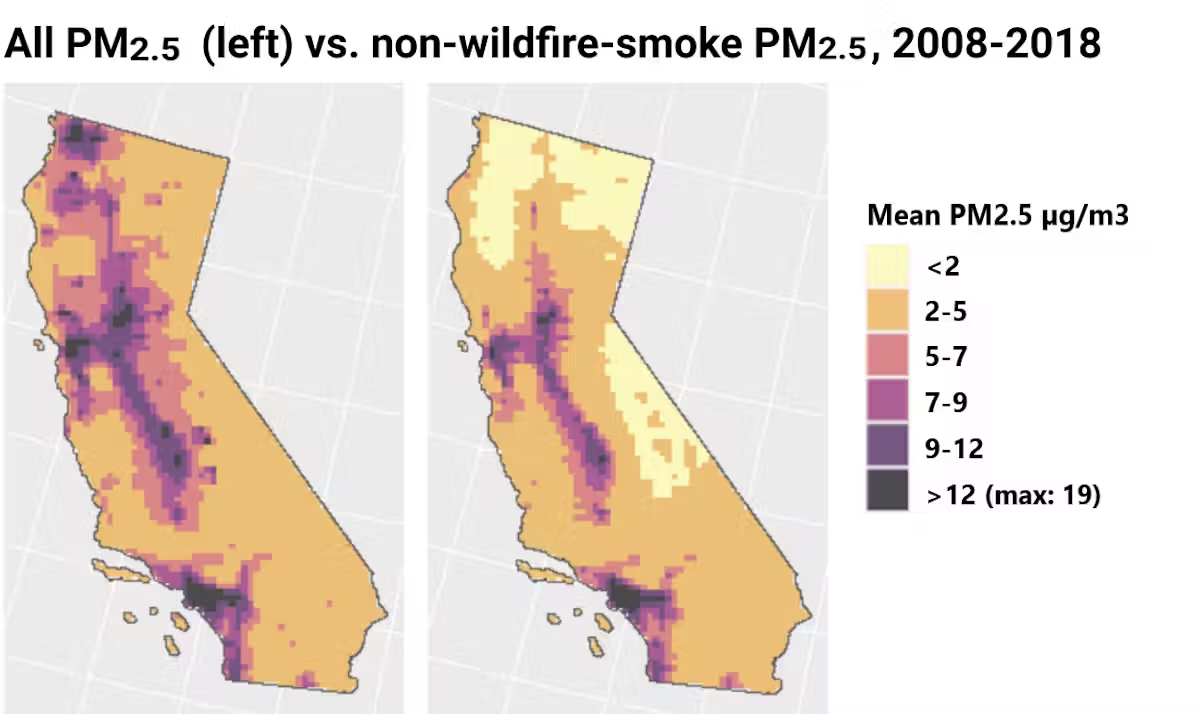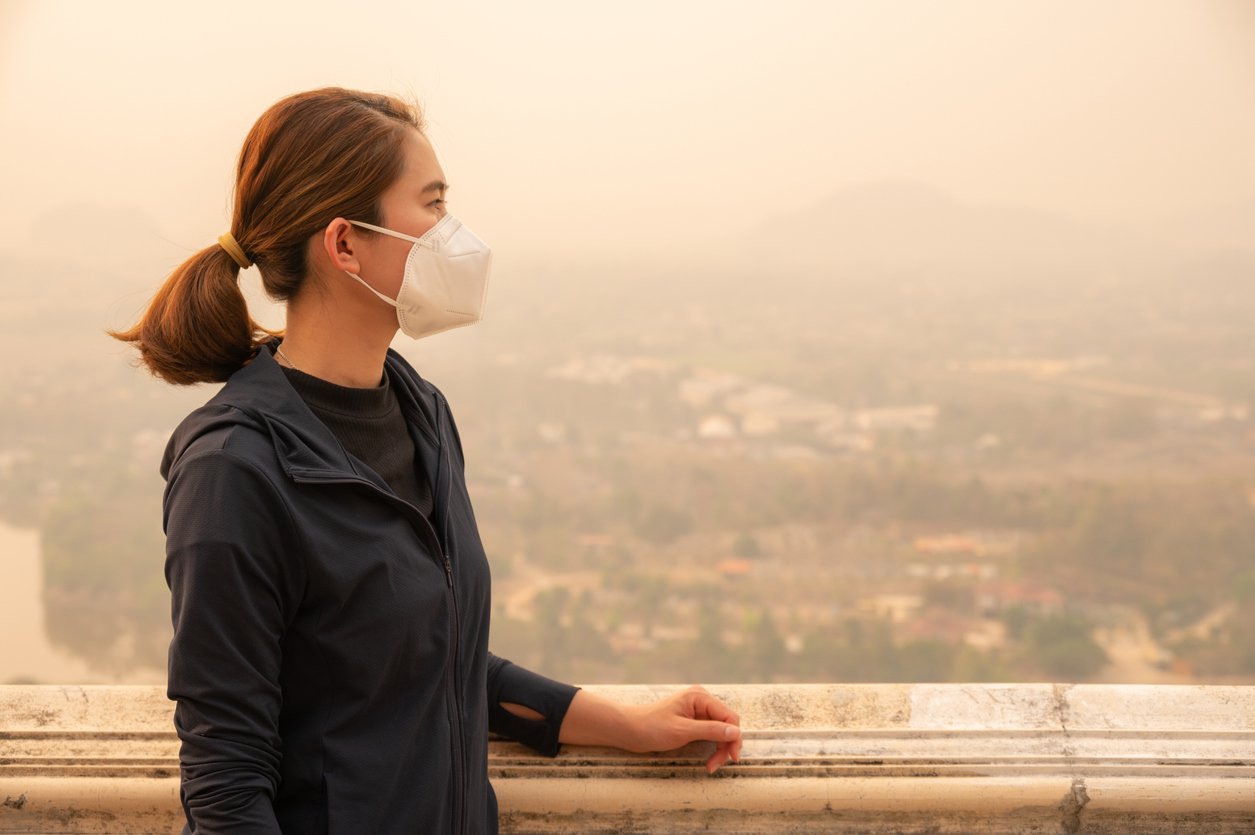By Rachel Connolly and Michael Jerrett • Originally published by The Conversation
When wildfires rage, the immediate threat is obvious — but smoke from the fires actually kills far more people than the flames.
As fires become more frequent, that smoke is leading to a public health crisis.
In a new study published in the journal Science Advances, we found that wildfire smoke likely contributed to more than 52,000 premature deaths across California alone from 2008 to 2018, with an economic impact from the deaths of more than $430 billion.
Previous studies have examined the short-term health risks from wildfire smoke, but few have assessed how exposure to wildfire smoke over the years has shortened human lives.
Wildfire risk and severity have grown as the climate has changed and as more people have moved into the edges of wildland areas, increasing the risk that they will start fires. Years of putting out all wildfires have also kept small fires from clearing out the undergrowth, meaning the fires that do escape have more fuel to burn.
As fires become a regular occurrence in our lives, it’s important for communities to understand that the health risks from smoke pollution are rising, too.
Health Risks of Wildfires

Decades of air pollution research have shown how exposure to fine particulate matter, or PM2.5, can harm a person’s long-term health.
PM2.5 is a mixture of small particles, each only a fraction of the width of a human hair. It comes from a variety of sources, such as vehicle tailpipes and factory emissions, as well as from other sources, including fires. The particles are so tiny that they can travel deep into the lungs and even enter the bloodstream.
Inhaling PM2.5 can cause short-term respiratory health problems in vulnerable populations, such as people with asthma and older adults. It also leads to long-term harm by contributing to the formation of chronic diseases, including atherosclerosis, asthma, decreases in lung function, and diabetes. One reason this happens is the body’s inflammatory response to inhaling air pollutants.

Wildfire smoke contains a stew of chemicals. A growing body of research indicates that wildfire PM2.5 may have unique physical and chemical components that increase toxicity. For example, a study from the University of California, Davis, showed that wildfire smoke caused more inflammation in the lungs of rats than PM2.5 from other sources such as cars and industry. This makes the pollutant potentially more harmful to human respiratory health compared with the typical PM2.5 that people are exposed to in urban environments.
The Problem With Wildfire Smoke
We examined the long-term health damages from breathing wildfire smoke. The results, from over a decade, suggest that in years with lots of fire activities – 2017 and 2018, for example – wildfire smoke contributed to more than 10,000 deaths annually in California. For comparison, about 4,000 people die in California from traffic accidents each year.
Even though most fires are in rural, forested areas, smoke can travel hundreds or thousands of miles, so the health effects are widespread through population centers.
For example, California’s Rough Fire of 2015 burned more than 150,000 acres in a mostly rural area of Fresno County, but most mortality impacts in that year were west of the fire in a more populated area of the county and throughout the San Joaquin Valley. In 2018, the year the town of Paradise and several other communities burned, wildfire smoke may have prematurely killed as many as 12,000 Californians.
To conduct this analysis, we looked at annual estimates of wildfire smoke PM2.5 by ZIP code based on wildfire activity. Unlike most past studies, we looked specifically at exposure to PM2.5 from wildfires, which allowed us to account for the potentially increased toxicity of smoke.
Then, we used a dose-response estimate for the relationship between wildfire-specific air pollution and premature deaths. Dose-response estimates are derived from epidemiological studies that relate air pollution levels to survival. For this study, we adjusted an existing dose-response estimate to account for potential increased toxicity from wildfire smoke.

How to Stay Safe When Dealing With Wildfire Smoke

These findings suggest that society needs to invest in coordinated forest management, wildland-urban interface management, and climate change mitigation – all of which could yield significant public health benefits by reducing the frequency and severity of wildfires and smoke exposure. We will also need to invest more in adapting to worsened smoke by providing safe areas in schools and other public buildings.
Here are some tips for limiting how much smoke you inhale on days when the wind is carrying wildfire smoke your way:
- Stay indoors: Don’t go outside on heavy smoke days, and close your windows. Turn on an air purifier if you have one. If you don’t have one, consider purchasing one with a HEPA filter. The California Air Resources Board has a list of certified air filters. If you smell smoke or know there is a fire nearby – even if you can’t see it – check a resource such as the EPA and Forest Service’s AirNow Fire and Smoke Map or the PurpleAir map to get a sense of whether it’s safe to be outdoors.
- Wear a protective mask: If you do go outside, wear a protective mask, such as an N95, if possible. If you don’t have access to an N95, a surgical mask will help, too.
- Avoid exercising outdoors on smoky days: Strenuous activities such as exercise draw more air into the lungs – and with it, PM2.5. Exercising also causes your heart and respiratory system to work harder. If you exercise, do so inside in a place with filtered air.
- Stay informed: You can follow state and federal air quality agencies in your region on their websites and social media platforms and sign up for alerts when available.
Tell us in the comments:
- Are wildfires a problem where you live? How do you protect yourself from air pollutants?
Featured Image: iStock.com/Jorge Villalba

